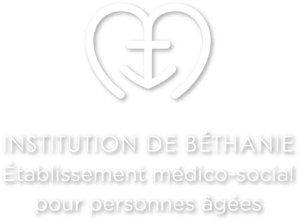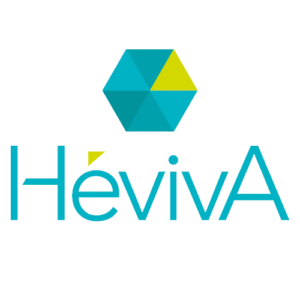What Is Six Sigma? Definition, Methodology and Certification
For each standard deviation away from the mean (0 in the graphic above), your process gets more and more defect-free. In a normally distributed process, if the mean ±3σ range of output is between USL and LSL, then around 99.73% of the points of the output will be non-defective. While Six Sigma is known to be suitable for larger companies, it can be used for small businesses too, with some modifications to processes. We often use “Six Sigma” problem solving and analysis tools such as SIPOC charts, Fishbone Diagrams and Design of Experiments when solving complex problems. However most problems are not complex to solve and that’s where the simple and effective Lean approach has the edge.
DMADV:
The International Association for Six Sigma Certification (IASSC) and other organizations provide certifications to validate expertise in Six Sigma methodologies. Because the two acronyms are so similar, some companies use the acronym DFSS (design for Six Sigma) in place of DMADV. More recently, organizations have adopted Six Sigma alongside digital transformation initiatives to optimize processes, increase agility and adapt to changing market demands. The term Six Sigma has broad applications, but if we focus on best invoicing software for small businesses 2021 Six Sigma in terms of an organizational improvement deployment, there are a few best practices that improve your odds of success.
The define stage creates a “rough draft” while the measure converts that into a final one. The roots of statistical process control (SPC), which provide a backbone for Six Sigma methods, began with the development of the normal curve by Carl Friedrich Gauss4 in the 19th century. Implementing Six Sigma principles in workplace safety and health can lead to the identification and elimination of hazards, reducing the likelihood of accidents, injuries, and occupational illnesses. By detecting root causes of safety issues, organizations can develop effective control measures and preventive actions to create a safer work environment. Learn about the Five Whys, which is used in the Analyze phase of the Six Sigma DMAIC methodology; SIPOC, which is often used during the Define phase; and fishbone diagrams, which are one of the basic quality tools used in the Analyze phase.
The Six Sigma Belts and Their Role in a Six Sigma Project
Six Sigma ranks among the foremost methodologies for making business processes more effective and efficient. Lean Six Sigma is a team-focused managerial approach that seeks to improve performance by eliminating waste and defects while boosting the standardization of work. It combines Six Sigma methods and tools and the lean manufacturing/lean enterprise philosophy, striving to reduce the waste of physical resources, time, effort, and talent while assuring quality in production and organizational processes. Any use of resources that does not create value for the end customer is considered a waste and should be eliminated. Six Sigma strategies seek to improve manufacturing quality by identifying and removing the causes of defects and minimizing variability in manufacturing and business processes. This is done by using empirical and statistical quality management methods and by hiring people who serve as Six Sigma experts.
Six Sigma Definition
Advanced Six Sigma tools, such as statistical software and AI-driven analytics, now enable organizations to streamline data collection and analysis, further enhancing accuracy and decision-making. In 1984, a Motorola engineer named Bill Smith developed the Six Sigma management system to reduce the variations in Motorola’s electronic manufacturing processes that were causing product defects. Six Sigma can be used in a wide variety of contexts, including as a statistical measure, a measure of quality, a measure of process capability, and a philosophy and methodology for improving an organization. The BB collected some production data from the fill line and did a process capability study. Below, you will see that 5% of the company’s production was below the lower specification, which was an how to choose best accounting software unacceptable rate. Many of the world’s best-known companies have tried or are currently implementing some version of Six Sigma.
Together they are used to improve overall efficiency (OEE) and reduce waste in all company processes. Both approaches help roland morgan, author at online accounting companies to complete projects faster and with fewer errors, resulting in higher customer satisfaction. When combining Lean Management and Six Sigma, there are several risks that companies should consider. LA studies using social educational robots have increased in the last five years (Fig. 5) and this was one of motivations for this review. The scoping review found six studies which deliberately combined LA and social robots (one case of SER-unaware LA 37; and the five pure SER-LA 31, 35, 42,43,44), all six published 2019–2022. It is also relevant to mention nine LA publications between 2018 and 2022 that used other types of robots 8, 58,59,60,61,62,63,64,65, adding evidence for an emerging area.
In both DMAIC and DMADV, teams create a project charter and a basic work plan. A charter is a synopsis of the project and provides common information and a summary of what the team hopes to accomplish. The charter also features a list of team members, names of those responsible for outcomes, a problem statement, a goal, and some basic definitions of scope and metrics for success. In DMAIC define phase, the project requirements are identified, and goals for success are set. Requirements and goal setting might relate to a variety of factors and are dependent on guidance from the leadership and expected budgets.
- Six Sigma projects that are meant to improve an existing process follow a roadmap for success known as the DMAIC process (pronounced duh-MAY-ick).
- Every business strives to eliminate waste, inconsistencies, and defects that test the loyalty of their customers.
- It provides statistical tools to eliminate defects, identify the cause of the error, and reduce the possibilities of error.
- Subsequently, project teams are formed, drawing upon the collective expertise of individuals from various organizational facets, each contributing the requisite skills and knowledge.
- The fishbone diagram helps gather collective ideas from the team on where a problem might arise and enables the team members to think of all possible causes by clarifying major categories.
- By defining ambitious goals that are reviewed frequently, priorities become clear and the focus shifts to problem prevention rather than firefighting and questioning.
Want to Pass Your Six Sigma Exam the First Time through?
Additionally, you might want to see the differences between Six Sigma and other approaches like Agile. While Agile has set the world on fire in terms of software development and tech deployment, it isn’t always the best fit depending on your organization. Many leaders are happy to endorse various types of improvement initiatives, but endorsement is not sufficient for an organizational transformation. It’s the all-in commitment and leadership of the effort that is critical for its long-term success.
- I urge you to go to your favorite job board and verify / invalidate this for yourself, though.
- Access and download collection of free Templates to help power your productivity and performance.
- Conversely, the primary focus of Lean Six Sigma is to eliminate waste and improve existing processes.
- We observed two examples of this possibility 28, 33, in which social educational robots exchange data with tablets and educational applications via Bluetooth.
- Thus, problems can be effectively defined, analyzed, and permanently resolved.
- The county says the savings are due in part to the introduction of more efficient new systems and the elimination of unnecessary, but time-consuming, steps from its prior processes.
Philosophy & Methodology
This is considering all “6 sigma” process over time would exhibit a drift (of 1.5 sigma) over a period of time (Long Term). Dan,I am little bit confuse about this answer which says that improve profit would be the primary goal to adopt six sigma. We know sigma is directly related to DPMO ( it talks about defect which due to process variation ) so in this sense ans should be A.
SIX SIGMA PROCESS SIX SIGMA DMAIC
The Six Sigma method uses a step-by-step approach called DMAIC, an acronym that stands for Define, Measure, Analyze, Improve, and Control. According to Six Sigma adherents, a business may solve any seemingly unsolvable problem by following these five steps. The five phases of the Six Sigma method, known as DMAIC, are defining, measuring, analyzing, improving, and controlling.
Six Sigma was coined by Bill Smith, an American engineer who is known as the father of Six Sigma. At the same time, he first implemented Six Sigma at Motorola in the year 1986 as a general approach to measuring quality in business performance terms. Now, randomly sampled output discovers that out of every 1,000 widgets, fifty are flawed (e.g. wrong size, shape, or weight). To correct this, the factory uses Six Sigma to determine what’s causing the variation/defects and works to reduce them to a six-sigma level.
The aim of Bill was to devise a mechanism that would standardize the defect management system in the manufacturing process of Motorola. In result, Motorola formulated such a method that provided them with a metrics to improve and monitor their quality development. The six sigma was reflective based on the metric that a product or process will only have 3.4 defects in a million opportunities.




Laisser un commentaire
Rejoindre la discussion?N’hésitez pas à contribuer !